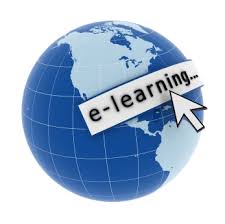Over 2.5 lakh Indians have registered for courses on edX, the massive open online course (Mooc) platform founded by Massachusetts Institute of Technology (MIT) and Harvard University in May 2012 to host online university-level courses.
This makes Indians the second largest community, after Americans, to register for these courses, said edX president Anant Agarwal, an Indian American who grew up in Mangalore and who has been teaching the circuits & electronics course in MIT for 26 years.
The courses have been put together and are led by some of the finest professors in the world. Students require just an internet connection. The courses are free, can be normally completed within a duration of 4 weeks to 12 weeks, and those who complete them receive a certificate from the university that provides the course.
Some 2 million people from 196 countries have registered for edX courses, of which about 6 lakh are from the US, about 80,000 each from the UK and Brazil, and about 60,000 from China.
For Indians, the most popular courses have been those related to computer science, engineering , and public health. Globally and for Indians, the two most popular courses are ‘Introduction to computer science’, led by Harvard faculty David J Malan and Rob Bowden, and the circuits & electronics course led by Agarwal.
“Some 2.2 lakh people are currently registered for the introduction to computer science course, and some 3.6 lakh have registered for this course in the past two years. The circuits & electronics course has had a total of 2.5 lakh students since it started. About 12% of the students in both courses are from India,” said Agarwal.
Indians account for about 50% of the 70,000 enrolments in Harvard’s public health course. Agarwal said this strong interest from Indians was thanks to the Medical Council of India spreading the word among doctors.
edX, a not-for-profit initiative , and Coursera, a for-profit initiative by two Stanford professors , are among the biggest Moocs providers. edX now offers some 160 courses including in science, engineering, business, law, history, social sciences, and artificial intelligence. Only around 6% of those who register for these courses actually complete them and go on to receive certificates .
For this and other reasons, Moocs still has a lot of critics. Few think it can completely substitute classroom teaching. The big promise of Moocs is that it can take world-class education to those who are otherwise excluded for socioeconomic or geographic reasons. But a recent University of Pennsylvania study revealed that over 80% of surveyed people taking Moocs already hold college degrees.
Agarwal is unfazed by these arguments. Moocs, he says, are better than what you get in many universities, and particularly valuable for countries like India, for students who can’t get into the top schools or can’t afford them. “Today’s generation is also used to watching videos. And our courses give a video game-like experience. So students are very engaged. We are planning a big push in India,” he said.
He also noted instances of students benefiting from these courses. “One US student who took our software-as-a-service course added that to his LinkedIn profile and received a job interview call from a company in New York the very next day. Amol Bhave, a high school student in Jabalpur, took my course in circuits & electronics. He applied to MIT soon after and got in with financial aid,” Agarwal said.




